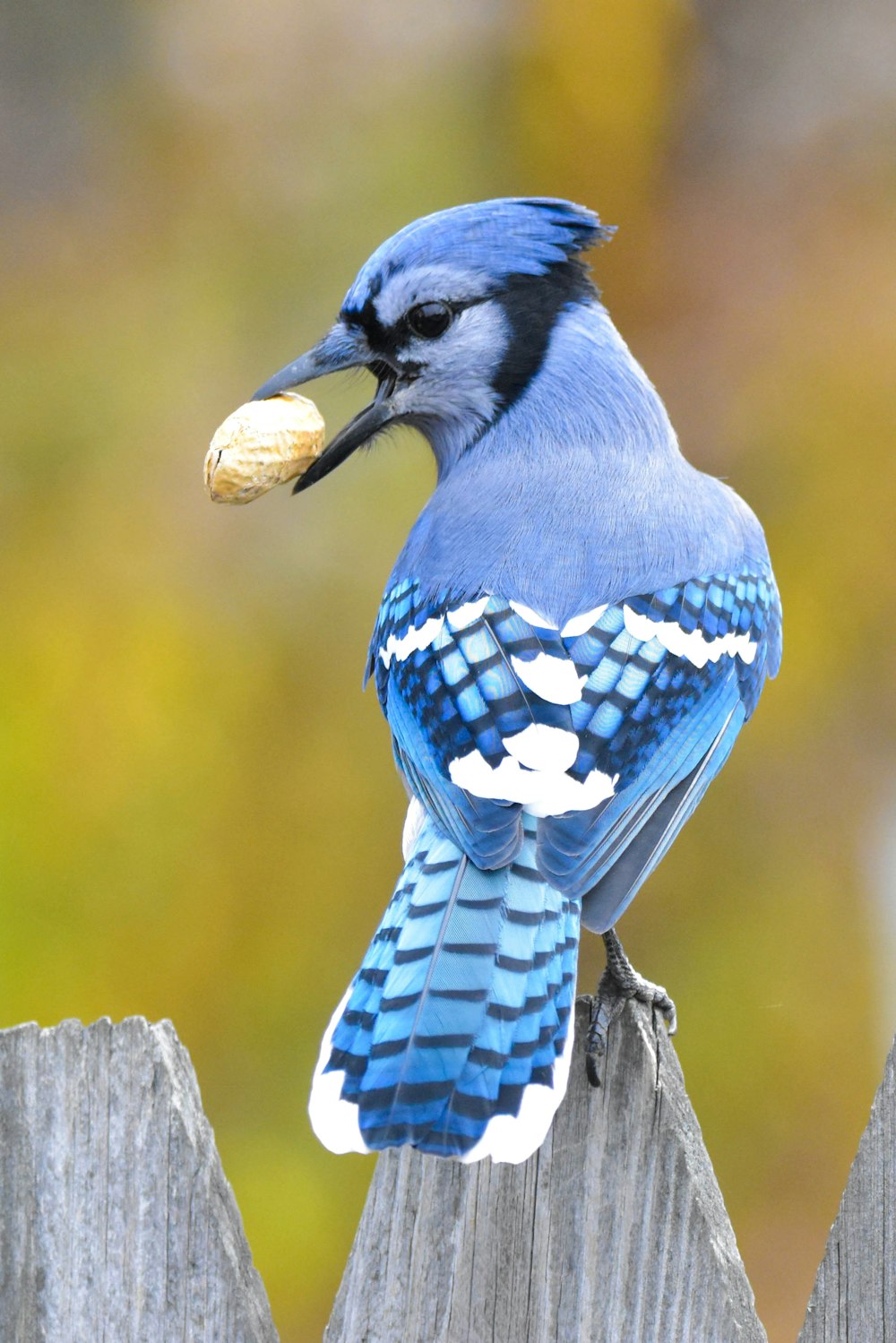This blue bird actually has ZERO blue feathers!
A trick of nature: Blue Jays aren't really blue!
When is a blue bird not blue? The answer to this question is always!!! There actually is no such thing in the WHOLE WORLD as a blue bird.
But how can that be?
When you take a look at the beautiful Blue Jay - supposedly named for their brilliant blue plumage - you will be forgiven for thinking you ‘see’ the colour blue.
In reality, thought, these birds don’t have a single drop of blue pigment in their feathers. Instead, their feathers are coloured by a pigment called melanin.
And just how melanin-rich human skin is brown in colour, the Blue Jay’s feathers are actually a shade of brown.
So why do we SEE the colour blue?
The phenomenon is due to a trick of the light, called ‘light scattering’, which refracts the blue wavelength back to our eyes and makes the Blue Jay’s feathers appear blue to us.
It’s a little complicated, so let me explain!
Visible light (sometimes known as white light) actually consists of 7 colours: violet, indigo, blue, green, orange, and red. We usually call it as ROYGBIV. When we mix all these colors we just get one light which is the WHITE light.
However, each of these 7 different colours have a different wavelength. It’s called wave LENGTH because it’s literally how long the ‘wave’ is - like how humans are taller or shorter in terms of height, colours are also longer or shorter in wavelength.
So, of the 7 different colours, the colour blue has one of the shortest wavelengths.
Imagine a torchlight shining at a bird. The light ‘hits’ the bird and the impact of the light ‘hitting’ the bird causes the 7 different wavelengths to bounce all over the place. Some of these light wavelengths bounce back to our eyes, which allows us to see the bird in the first place.
But because the blue wavelengths are shorter in the visible spectrum, they are scattered more easily by the molecules in the atmosphere. That means, we are more able to see the colour blue.

This same phenomenon is what causes the sky to appear blue! (Think about it. The sky doesn’t technically have a colour, does it? Before sunlight reaches us here on Earth, it has to travel through our atmosphere first and that layer of mostly nitrogen and oxygen particles refracts the white light in all directions. Shorter blue wavelengths are scattered much more than the longer ones by these particles, which is what makes the sky look blue.)
When light hits the feathers of blue jay, the tiny pockets of air and keratin in the feathers scatter the light, but the blue light is refracted more than the other colors, making the feathers appear blue to our eyes. Interestingly, this optical illusion doesn’t just apply to the sky, but also to all blue-colored birds, including the Blue Jay, the Indigo Bunting and the Bluebird.

There are no truly ‘blue’ birds in the whole world
The colour blue rarely occurs naturally. There are no blue leaves, blue mammals, blue birds, nor blueberries! Even though the berry is called ‘blue’, they are more purplish in colour.
Why’s that?
Well, the most common pigment in plants is chlorophyll, which is constructed in such a way that it reflects back the green wavelength of white light.
And since there are no true blue pigments in plants: birds can’t turn their feathers blue through food. The only known existing blue pigment in the animal world is produced in a handful of butterfly species who live in South America.
Before we end today’s article, let me share some cool facts about the Blue Jay!
About the Blue Jay
Blue jays appear to have a mid-blue-colored body with a white face. They look beautiful and striking, but don’t be taken in by their good looks: Blue Jays are voracious eaters and can be very aggressive to other birds! They are known to raid other birds’ nests and have even been found to have decapitated other birds! That’s brutal.
However, the Blue Jay isn’t some kinda mad cannibalistic bird. They mostly feed on seeds and nuts, such as acorns. They are smart birds, and have been known to hide stashes of acorns, which they then go back to and eat at a later time.
They are bold and can be aggressive
The Blue Jay seems to be quite a bold and gregarious bird. However, in the world of birds, it can be beneficial to stick around them!
That’s because Blue Jays have been known to chase away predatory birds, such as hawks and owls, and will scream if it sees a predator within its territory.
The intelligent Blue Jays are also known to sound an alarm call when hawks or other dangers are near. Smart smaller birds seem to recognise the Blue Jay’s alarm call, and will even hide themselves away accordingly. How nice!
It’s not all good, however: Blue Jays have also been known to attack or kill other smaller birds, and foliage-roosting bat species such as Eastern red bats. So I guess, if you’re a small bird, stick close enough to them that you can hear their alarm calls, but not too close to the point you’d get murdered…
That’s it for today’s article! I hope you learned something cool today!







We have Stellar’s jays and western scrub jays here in Washington. Both being attractive blue birds, though the crow-like Stellar’s jays are my favorites! Their feathers appear to be a very deep blue.